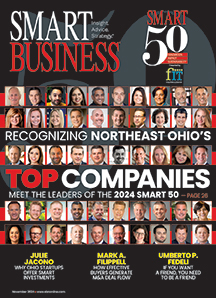If you want to spend more of your time focusing on your business and less time on administrative tasks, then a Professional Employer Organization might be for you.
PEOs are typically aimed at businesses with 10 to 100 employees and take over many of the human resources responsibilities.
“We are typically going into a small business that may not have a human resource manager on staff,” says Jeff Schwartz, district manager for Administaff, a PEO. “Rather than going out and spending $50,000 to $70,000 to have them on hand, a business can rely on a huge team of experts to handle all the HR functions for them.
“One of the unique advantages is that it legally shifts a lot of legal liabilities from being an employer to the PEO. Legally, Administaff becomes the employer of record.”
Functions a PEO handles could include payroll, quarterly taxes, garnishments on wages, workers’ compensation issues and federal and state unemployment claims.
Certain risks and liabilities become shared between the business and PEO, such as discrimination and harassment issues.
“This is where it’s the PEO’s responsibility to make sure you have everything in place to reduce the risks,” says Schwartz. “They make sure you are proactive instead of reactive.”
Some things, such as OSHA compliance can’t be shifted, and remain the responsibility of the company.
“A true PEO will come in and handle all your safety training to reduce your risks and liabilities,” says Schwartz.
A PEO can also help with the development of your employees.
“We can help with the people side of the business, such as recruiting, performance management, designing compensation plans and training managers,” says Schwartz. “The owner still has 100 percent control over the employees, they just aren’t dealing with all the minutiae. We can take care of everything, from before the person is hired until after you let someone go.” How to reach: Administaff, (216) 393-2000 or www.administaff.com
Human capital strategy
A Professional Employer Organization can help your business with more than just payroll and HR functions. It can help you get more productivity out of your existing work force, one way to increase revenue without spending more money.
An employee’s total capability equals the minimum standards of the job plus discretionary effort.
“All employees give at least the minimum standard, because that’s what they need to do to keep their job,” says Jeff Schwartz, district manager for Administaff. “All employees are capable of adding more discretionary effort. If you tie in an HR program that taps that effort, it’s almost all pure profit. That’s what we call a human capital strategy.
“It’s a way of getting the most out of your employees. It’s one way of increasing revenues without spending more money.”
A PEO will typically cost you the employer portion of the benefits costs plus an administrative fee. Total costs usually are about 2 percent to 5 percent of employee payroll.
When choosing a PEO, the National Association of Professional Employer Organizations has accreditation standards.
“You want to talk to someone that is accredited,” says Schwartz. “When dealing with a PEO, make sure they are a strong, viable PEO.”

